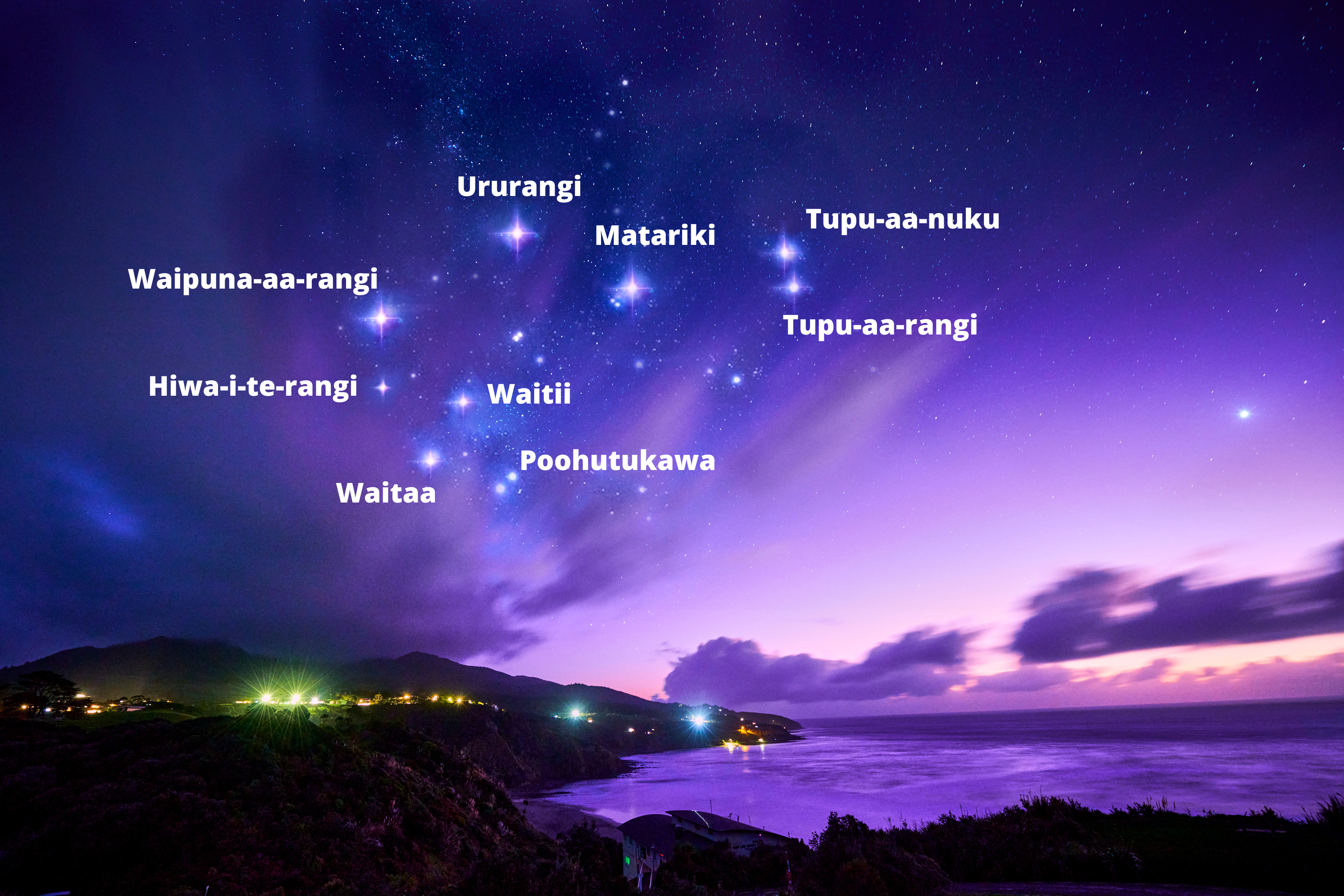A cluster is a group of stars that are near each other in space. When seen from Earth, the stars in a constellation appear to be close together in a pattern. There are about 500 stars in the Matariki cluster, but only around six/seven can be clearly seen from Earth without use of a telescope.
Contrary to popular belief, many Iwi believe there to be nine main stars in the Matariki cluster, each seen as an individual with a defined purpose that is intrinsically connected with te ao Maaori.
- Matariki is the mother of the constellation. She is connected with wellbeing, and often viewed as an omen of good fortune and health.
- Poohutukawa is connected with the dead, and in particular those who have passed on from our world since the last heliacal rising of Matariki.
- Tupu-aa-nuku is associated with food grown in the ground and traditionally, when Matariki sets in the western sky at dusk during the month of May, it indicates that winter is coming and the harvesting of the gardens should be completed.
- Tupu-aa-rangi is associated with the food that comes from the sky, connecting Matariki to the harvesting of birds and other elevated foods such as fruit and berries from the trees.
- Waitii is connected to fresh water and all creatures that live within rivers, streams and lakes.
- Waitaa is associated with the ocean, representing the many kinds of food that Maori gather from the sea.
- Waipuna-aa-rangi is connected to the rain.
- Ururangi means ‘the winds of the sky’ and is said to determine the nature of winds for the year.
- Hiwa-i-te-rangi is connected to the promise of prosperous season.
Read more.
